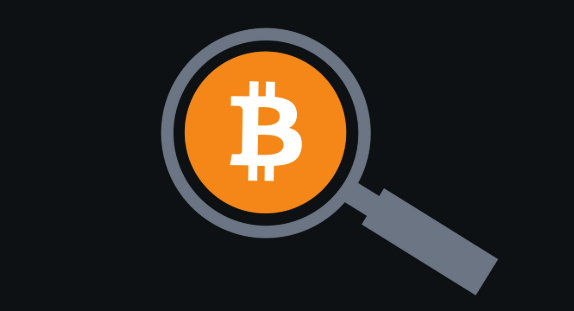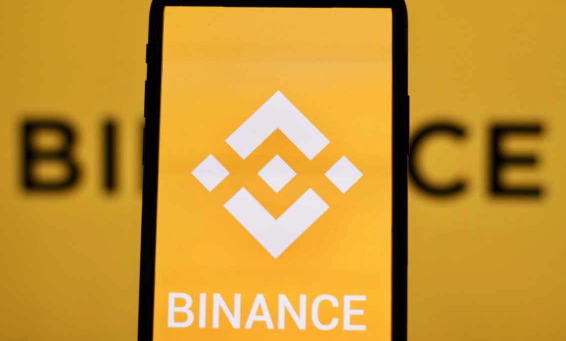 web3.0
web3.0
 What is blockchain technology? How does blockchain ensure transaction security? Will it become the core of future finance?
What is blockchain technology? How does blockchain ensure transaction security? Will it become the core of future finance?
What is blockchain technology? How does blockchain ensure transaction security? Will it become the core of future finance?
Jul 24, 2025 am 06:48 AMBlockchain is a decentralized distributed ledger technology that can realize secure data exchange and value transfer between multiple parties without relying on third-party intermediaries. With its immutable and traceable characteristics, blockchain is being widely used by more and more financial institutions and technology companies.

- Decentralization: The blockchain is maintained by multiple nodes, without a single controller, reducing the risk of the system being manipulated.
- Immutable: Once a block is generated, it cannot be changed, ensuring that the data is authentic and trustworthy.
- Traceability: All transaction records are permanently retained and any historical data can be traced.
- Consensus mechanism: reach transaction consensus through PoW, PoS and other mechanisms to avoid problems such as double payment.
- Encryption algorithm protects data: SHA-256 and other encryption algorithms are used to encrypt transaction data to ensure security during data transmission.
- Consensus mechanism verification transactions: All transactions must be verified by most nodes across the network to ensure that the transactions are true and valid.
- Multi-node distributed storage: All nodes have complete or partial ledger copies, and the system still operates stably even if some nodes are attacked.
- Automatic execution of smart contracts: transaction rules are written into smart contracts in advance to avoid human intervention and improve trust.
- Ouyi OKX: ——Provide multi-chain asset trading and DeFi services, with a friendly interface and strong liquidity.
- Binance: ———The exchange with the largest number of users in the world, supporting rich currency and multiple security mechanisms.
- Huobi HTX: ———An old platform, supporting diversified functions such as spot, contracts, and pledges.
- Gate.io gate: ——The coin is fast and the project is novel, suitable for middle and high-level users.
- Cross-border payment speeds up and reduces fees: realize payment in seconds through on-chain settlement, bypassing the traditional banking system.
- Asset digitalization: Financial assets such as bonds and stocks can be put on the chain to enhance liquidity and transparency.
- Supply chain finance: Use blockchain transparency to solve information asymmetry problems and improve financing efficiency.
- Identity authentication and risk control: On-chain identity systems can be used for efficient KYC and fraud prevention operations.

- OKX: The cold and hot money bud isolation mechanism is adopted, and there are no major safety accidents in history.
- Binance: Introducing SAFU funds to deal with emergencies and support two-factor identity verification.
- HTX: supports multiple signatures and address whitelists, and the platform responds quickly.
- Gate.io: It has a security audit mechanism and has a high user security rating.
- Newbie users recommend giving priority to well-known platforms such as Binance or OKX, which has a more stable experience and an active community.
- Before investing or participating, be sure to understand the platform rules and project background and pay attention to the security mechanism.
- Blockchain’s role as a financial infrastructure is increasing and will be widely used in core areas such as payment clearing and asset management in the future, and it deserves continuous attention.
The above is the detailed content of What is blockchain technology? How does blockchain ensure transaction security? Will it become the core of future finance?. For more information, please follow other related articles on the PHP Chinese website!

Hot AI Tools

Undress AI Tool
Undress images for free

Undresser.AI Undress
AI-powered app for creating realistic nude photos

AI Clothes Remover
Online AI tool for removing clothes from photos.

ArtGPT
AI image generator for creative art from text prompts.

Stock Market GPT
AI powered investment research for smarter decisions

Hot Article

Hot Tools

Notepad++7.3.1
Easy-to-use and free code editor

SublimeText3 Chinese version
Chinese version, very easy to use

Zend Studio 13.0.1
Powerful PHP integrated development environment

Dreamweaver CS6
Visual web development tools

SublimeText3 Mac version
God-level code editing software (SublimeText3)
 What is Boundless(ZKC) coin? What is the future potential? ZKC token price forecast
Sep 17, 2025 pm 04:27 PM
What is Boundless(ZKC) coin? What is the future potential? ZKC token price forecast
Sep 17, 2025 pm 04:27 PM
In the active crypto market, the ZKC token issued by Boundless, a second-tier platform focusing on zero-knowledge proof technology, is expected to stabilize around $0.8 before and after listing. ZKC tokens launched WhalesPro's leading TGE pre-trading OTCDEX WhalesPro recently ushered in ZKC tokens, and its inflows continue to rise, with the cumulative total transaction volume exceeding US$307,000. The current ZKC quote on the platform is $0.705, a drop of nearly 12%. However, trading volume surged by more than 734% in 24 hours to $155,971. Buyer's orders are mainly large, with bidding ranges ranging from 0.8 to
 What is Boundless(ZKC) coin? Is it worth investing? Boundless technology architecture, token economics and future prospects
Sep 17, 2025 pm 04:45 PM
What is Boundless(ZKC) coin? Is it worth investing? Boundless technology architecture, token economics and future prospects
Sep 17, 2025 pm 04:45 PM
Directory What is Boundless? Vision and Positioning Target Users and Value Technology Architecture Proof Network: Off-chain Generation Aggregation and Settlement: On-chain Verification PoVW Incentives: Pay for Verified Job Development and Interoperability Integration Path Performance and Security Discussion ZKC Token Economics Supply and Inflation Utility and Value Acquisition Ecosystem Partnership and Latest Progress Recent Milestones and Market Signals Developers and Infrastructure Responds Future Roadmap Verifier Capacity and Geographic Distribution Standardization and SDK Deepening Frequently Asked Questions Key Points Boundless aims to build "verifiable computing" into a cross-chain public service:
 What is a stablecoin? How does it work? A list of the most well-known stablecoins
Sep 24, 2025 pm 01:54 PM
What is a stablecoin? How does it work? A list of the most well-known stablecoins
Sep 24, 2025 pm 01:54 PM
Directory What is a stablecoin? How does stablecoins work? The decentralized support of cryptocurrencies is based on traditional assets. The classification of stablecoins is supported by algorithms. The stablecoin with fiat currency collateral assets B. The stablecoin with cryptocurrency collateral assets C. Why does the algorithmic stablecoin have stablecoins? The most well-known stablecoins at a glance. Tether (USDT) BinanceUSD (BUSD) USDCoin (USDC) DAI (DAI) Stablecoins Pros and Cons. Stablecoins Controversy and Future Controversy Points: Future Trends: Conclusion: Stablecoins and their role in the cryptocurrency world. What are the common questions about stablecoins? What is the best stablecoin?
 What is ARAI (AA) currency? Is it worth investing? AA Token Price Forecast 2025
Sep 24, 2025 pm 01:45 PM
What is ARAI (AA) currency? Is it worth investing? AA Token Price Forecast 2025
Sep 24, 2025 pm 01:45 PM
Table of Contents 1. ARAI project overview 2. Basic information of AA tokens 3. AA token price performance 4. AA token price prediction 5. Factors affecting the price of AA tokens 6. How to trade AA tokens on Gate and participate in activities? 7. Investment risks and precautions Future Outlook Today, as the crypto market is constantly looking for new hot spots, ARAI (AA) has been a project that combines AI and Web3, and its recent performance has been eye-catching. Its token AA has increased its price by more than 40.13% in the past 24 hours, with transaction volume reaching US$53.96 million. It works with Google
 BTC is 'digesting future market trends ahead of time': 5 most noteworthy Bitcoin points this week
Sep 20, 2025 pm 01:39 PM
BTC is 'digesting future market trends ahead of time': 5 most noteworthy Bitcoin points this week
Sep 20, 2025 pm 01:39 PM
Table of Contents As traditional financial markets recover, Bitcoin volatility has risen significantly. The Fed's interest rate cut expectation has become the focus of the market. The peak of Bitcoin bull market may be "only a few weeks left". Binance has seen a large-scale buy signal. ETFs continue to absorb newly mined BTC. Bitcoin (BTC) investors are closely following market trends as crypto assets enter the Fed's key interest rate decision window. At the beginning of this week, bulls need to break through the important resistance level of $117,000 to continue their uptrend. Global attention is focused on Wednesday's Federal Reserve meeting, and it is generally predicted that it will usher in the first rate cut in 2025. A past accurate BTC price model shows that all-time highs may be born in the next few weeks. Binance Order Book reveals signs of large buying influx over the weekend. Last week, the amount of BTC purchased by institutions through ETFs reached miners
 What is high-frequency trading of cryptocurrency? How to operate? Analysis of the advantages and disadvantages of high-frequency trading and future development
Sep 24, 2025 pm 01:42 PM
What is high-frequency trading of cryptocurrency? How to operate? Analysis of the advantages and disadvantages of high-frequency trading and future development
Sep 24, 2025 pm 01:42 PM
Table of Contents What is high frequency trading How high frequency trading How high frequency trading does high frequency trading Benefits of high frequency trading HFT execution faster High turnover rate and order trading ratio High frequency trading has huge growth potential overseas High dominance Common HFT strategies How to use algorithms in high frequency trading Disadvantages of high frequency trading How to future high frequency trading The latest developments of cryptocurrency high frequency trading (2023-2025) Cryptocurrency high frequency trading (HFT) is the evolution and application of traditional financial fields strategies in the digital asset market. Below I will fully interpret its definition and fortune for you
 Pump.fun sets off a live coin distribution craze: four popular projects quickly count
Sep 20, 2025 pm 01:12 PM
Pump.fun sets off a live coin distribution craze: four popular projects quickly count
Sep 20, 2025 pm 01:12 PM
Catalog BagworkKINDSTREAMERBUNCOINCLIP?pump.fun once again became the focus of the market. This time, not only was its token PUMP listed on the well-known Korean exchange Upbit and its increase in the past week was nearly 60% (Odaily Planet Daily will analyze the fundamental changes of Pump.fun in another in-depth article), but also the unexpected popularity of its live broadcast function. According to GMGN statistics, in the Pump.fun Live's "Graduation" sector, there have been 39 tokens with a market value of more than one million US dollars. The following are the popular projects in the recent Pump.fun live broadcast section compiled by Odaily Planet Daily. Odaily's warm reminder: Me
 What is FOMC? How does it affect cryptocurrency? Explain the article in detail
Sep 20, 2025 pm 02:06 PM
What is FOMC? How does it affect cryptocurrency? Explain the article in detail
Sep 20, 2025 pm 02:06 PM
Table of Contents What is the Federal Open Market Committee What does the Federal Open Market Committee do? Why is the Federal Open Market Committee important How does the Federal Open Market Committee affect cryptocurrency traders How does the FOMC affect cryptocurrency Fed interest rate changes What is the monetary policy why is the important How does the investor sentiment change FOMC policy impact scenario What happens in hawkish scenarios (more tighter policies, such as raising Fed interest rates) What happens in a dovish scenario (loose policies, such as lowering Fed interest rates) What happens in neutral situations What other key economic indicators are prepared for economic data release monitoring consensus forecast analysis historical response tracking Fed policy FOMC events


